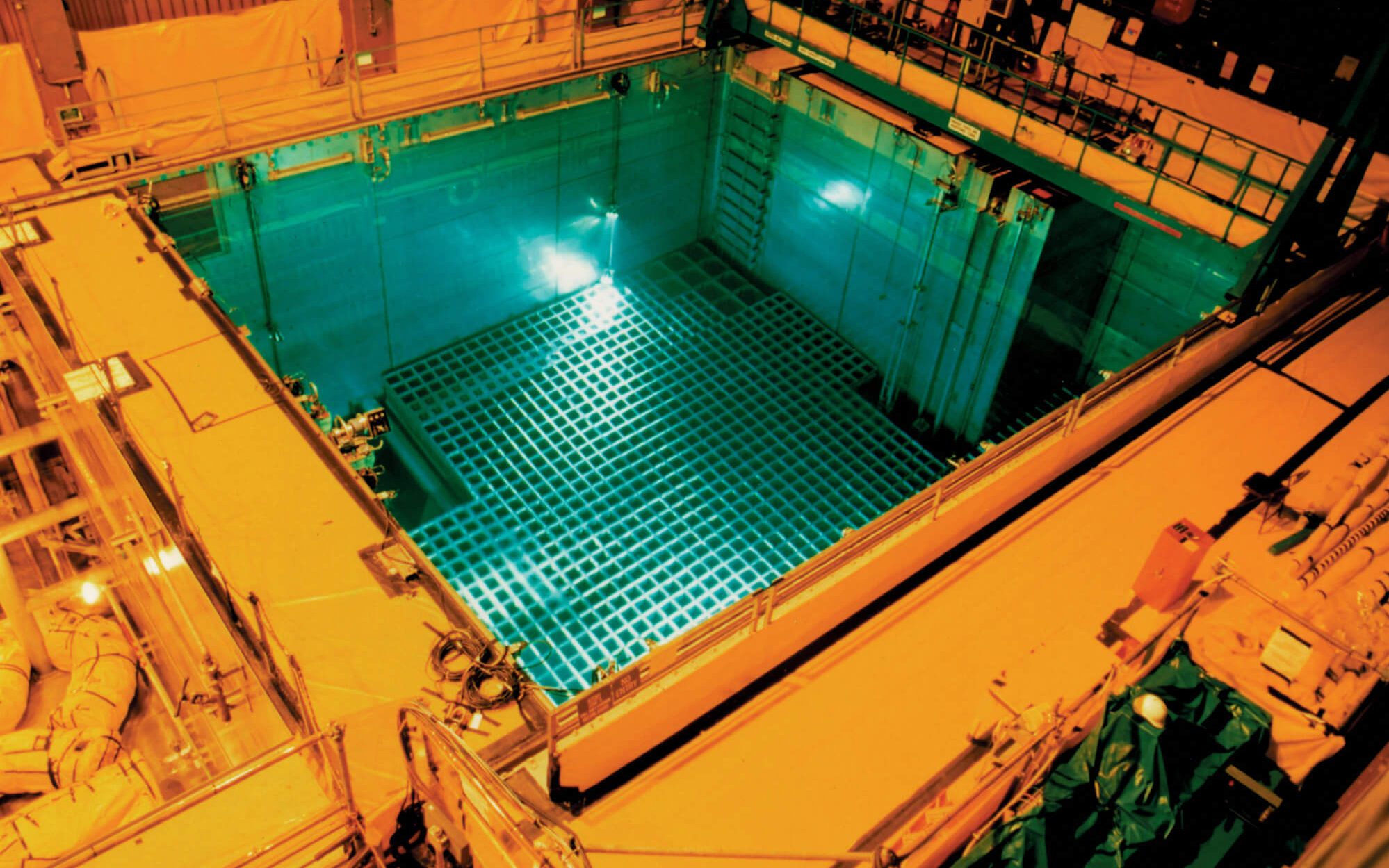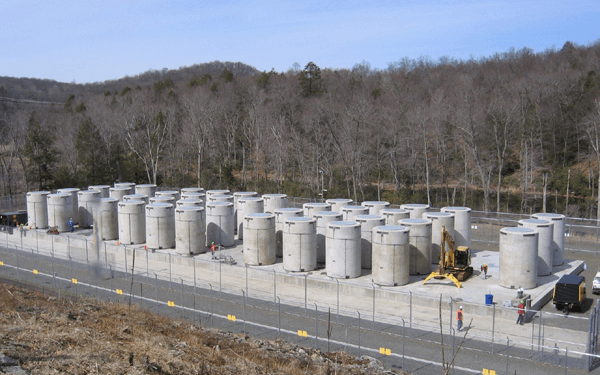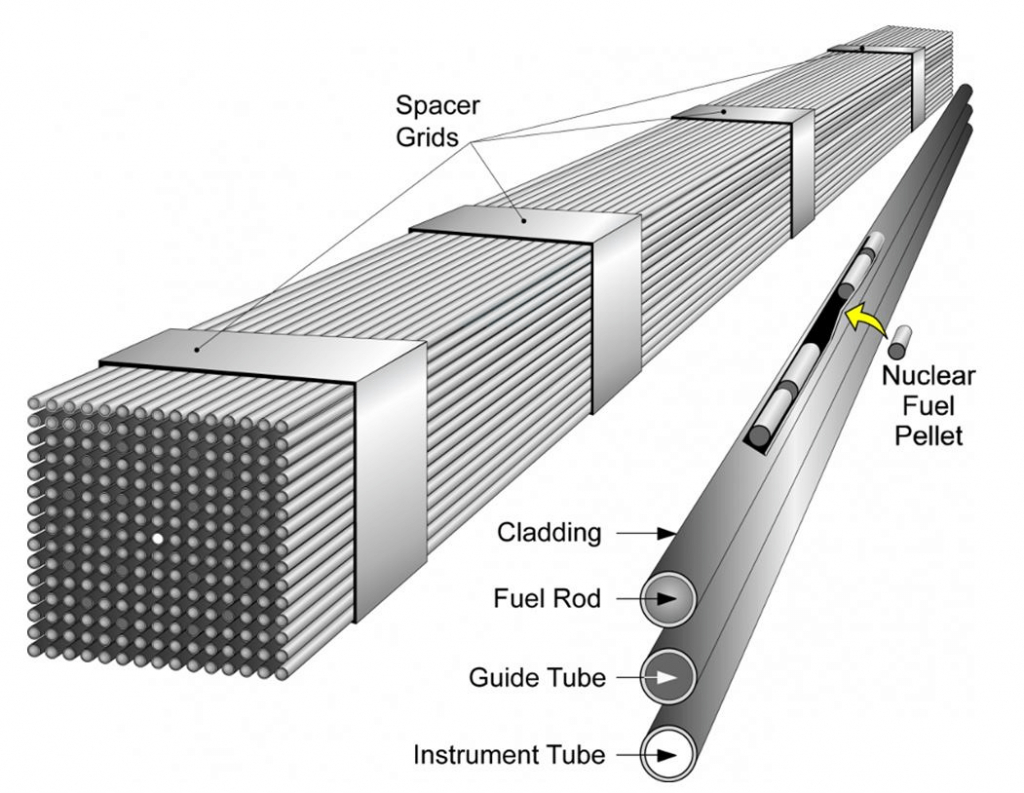What is spent nuclear fuel?
Spent nuclear fuel is nuclear fuel that has been removed after being used in a nuclear reactor. At first, spent nuclear fuel is thermally hot and very radioactive so it is placed into water cooling pools at the reactor site for at least five years. These pools are at least 20 feet deep and provide shielding and a cooling mechanism. It is then moved to large storage casks where it passively cools and awaits final disposal.


Most nuclear fuel is composed of specific isotopes that will fission or will split apart, and release energy. Fissionable isotopes used in nuclear fuel are often Uranium-235 or Plutonium-239. However, both of these isotopes are not the most common isotopes of their respective elements. Uranium-235 is currently the most often used isotope in nuclear fuel around the world.
Isotopic Abundances of Naturally Occurring Uranium
Uranium-235: 0.72%
Uranium-238: 99.28%
For nuclear power purposes, the Uranium-235 content must be enriched to 3.5% to 4.5%. Nuclear fuel contains small (less than ½ inch in diameter and length) ceramic pellets made of uranium oxide. These pellets are stacked and sealed inside a metal tube, which is called a fuel rod. Many fuel rods are arranged to make a fuel assembly. These fuel assemblies are about 14 feet long and weigh about 500 kg or about 1100 lbs, depending on the type of reactor.

Before use, nuclear fuel pellets are not radioactive, meaning you can stand next to unused fuel and be perfectly safe. After use, the fuel pellets contain isotopes/radionuclides leftover from nuclear reactions in the reactor that emit energy. These radionuclides are called fission products and have different half-lives – the time it takes for the radioactivity of a specified isotope to fall to half its original value.
Some common short-lived fission products have relatively low half-lives of around 30 years and include certain isotopes of cesium, strontium, neptunium, americium, and curium. This means that after spent nuclear fuel is taken out of a reactor and 30 years have passed, only half of these short-lived fission products are leftover. After 100 years, less than ⅛ of short-lived fission products are left. Other elements produced have long half-lives and require isolation from the biosphere for hundreds of thousands of years. Fission products vary in radioactivity, but the ones that pose a larger risk to human health and the environment are long-lived fission products.
Related Content:
Additional Resources

Deep Isolation Story
It is time to consider alternative options to address the nuclear waste challenge by working alongside communities for mutually beneficial solutions.


FAQS
Deep Isolation answers frequently asked questions about our technology, our process, and safety.
